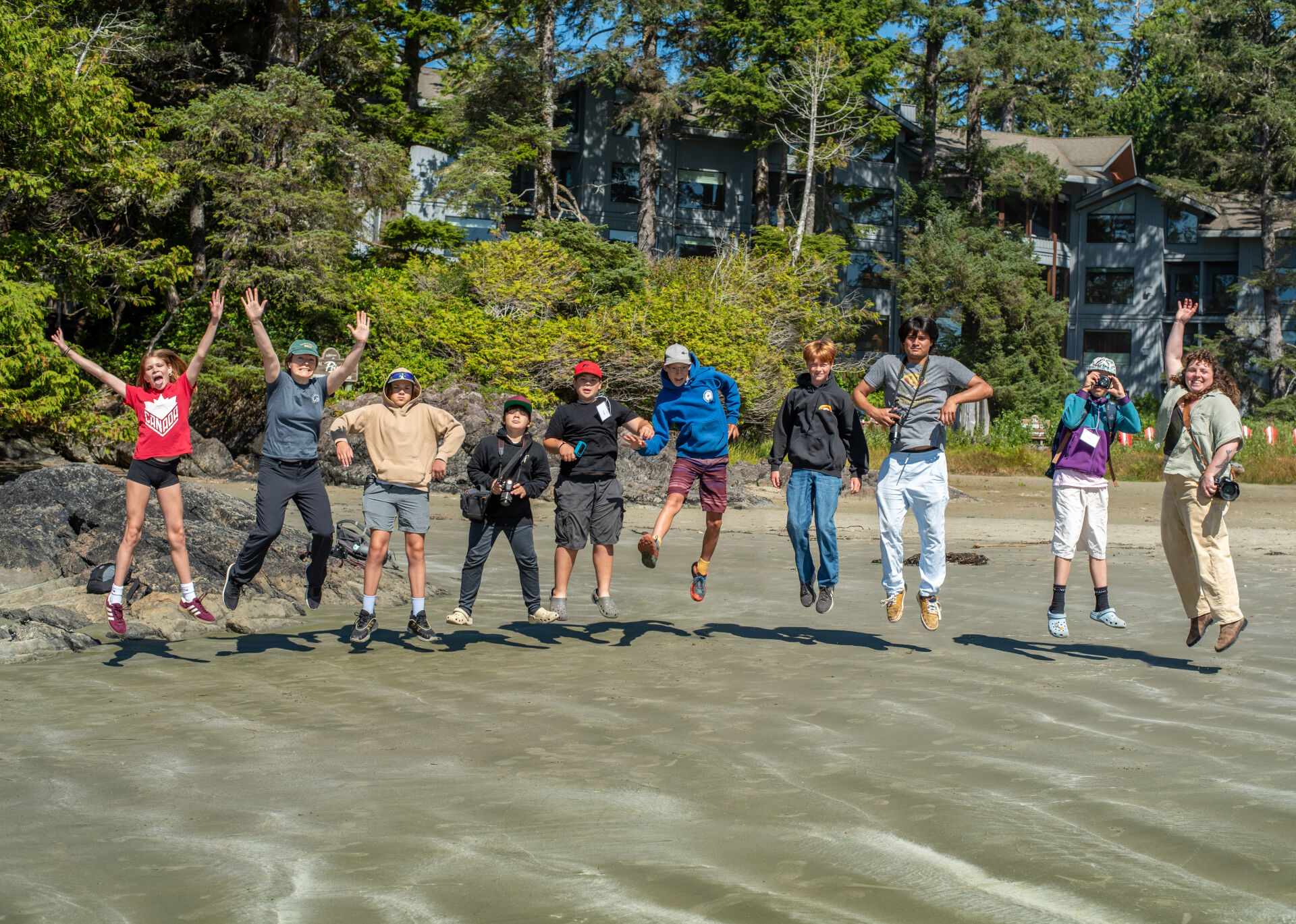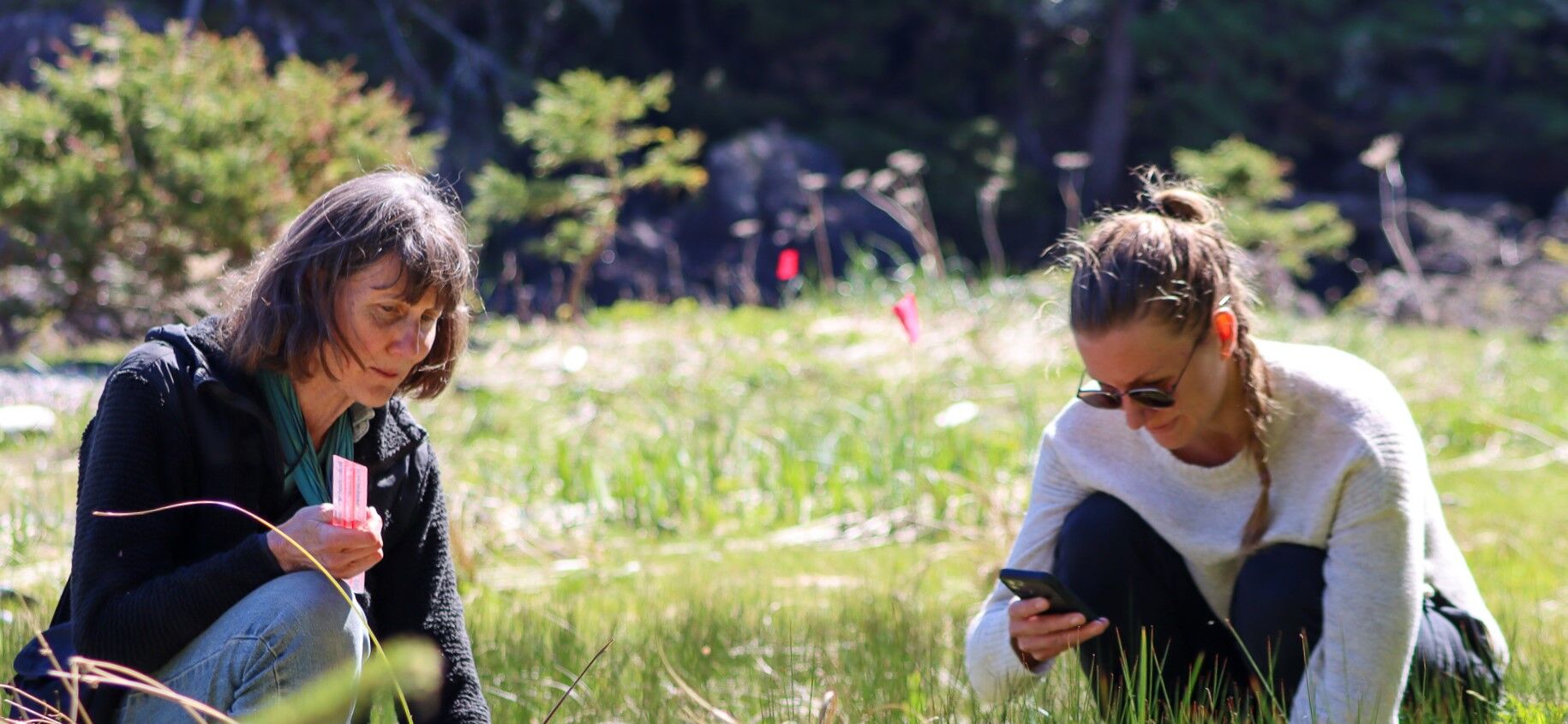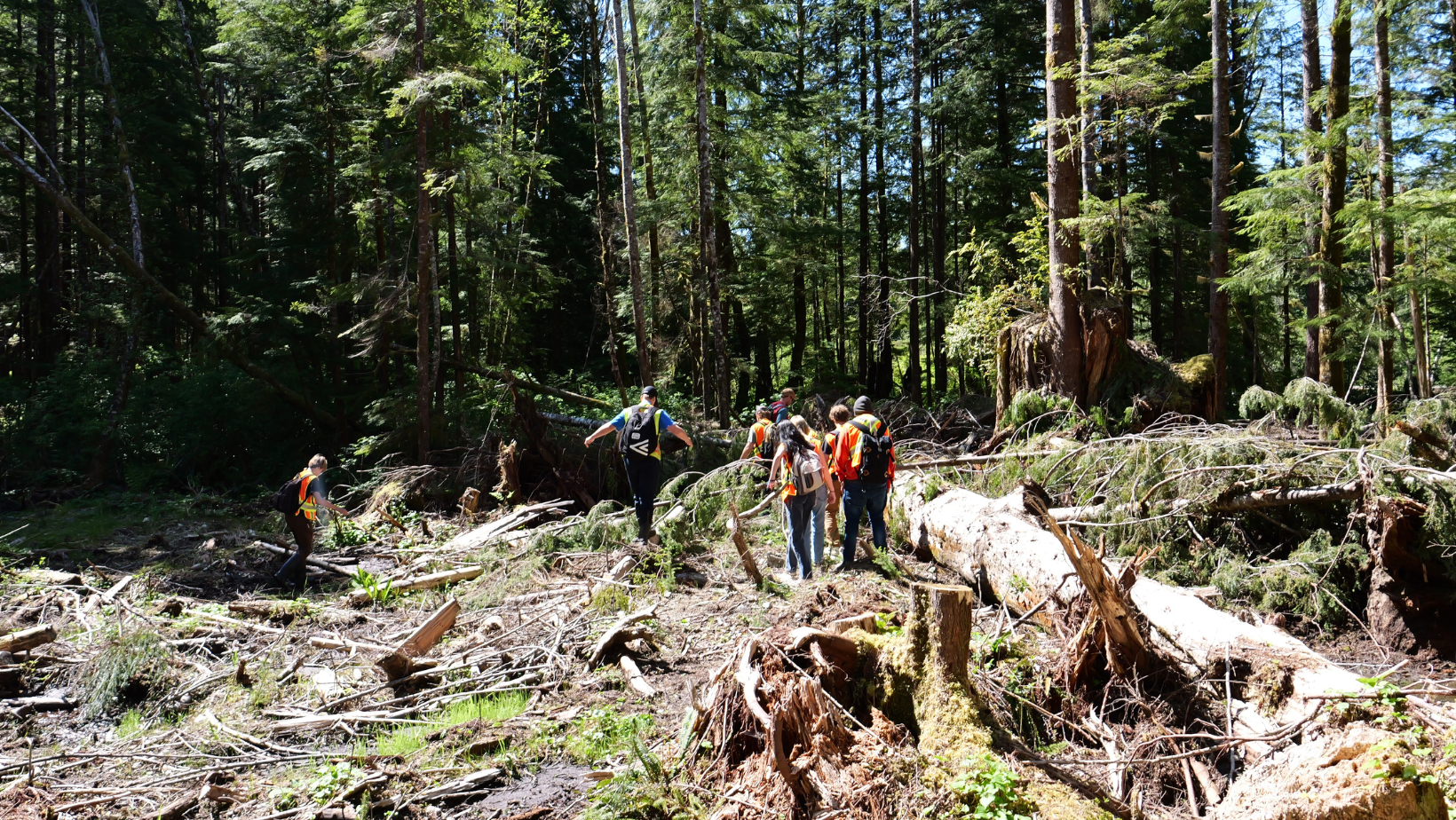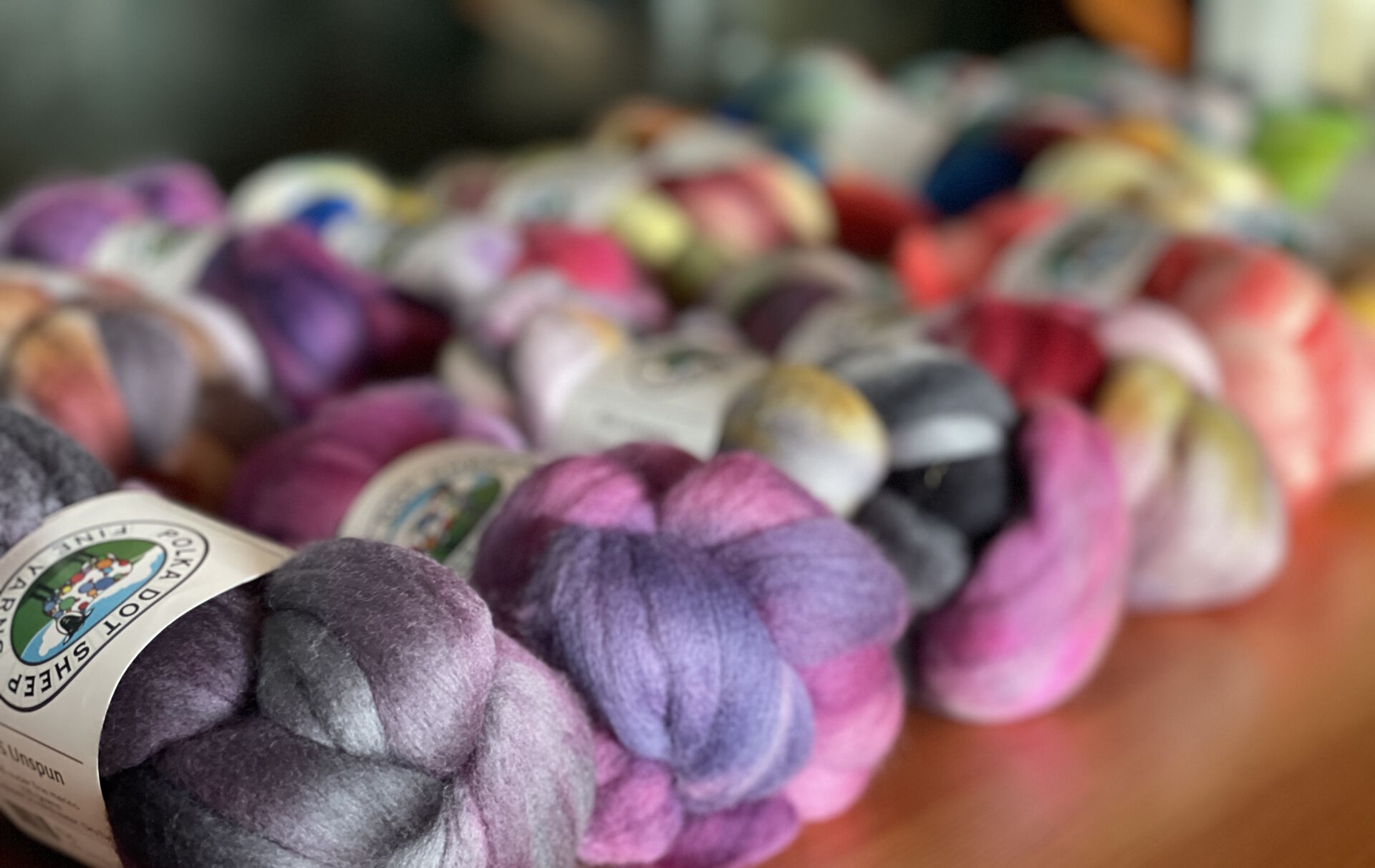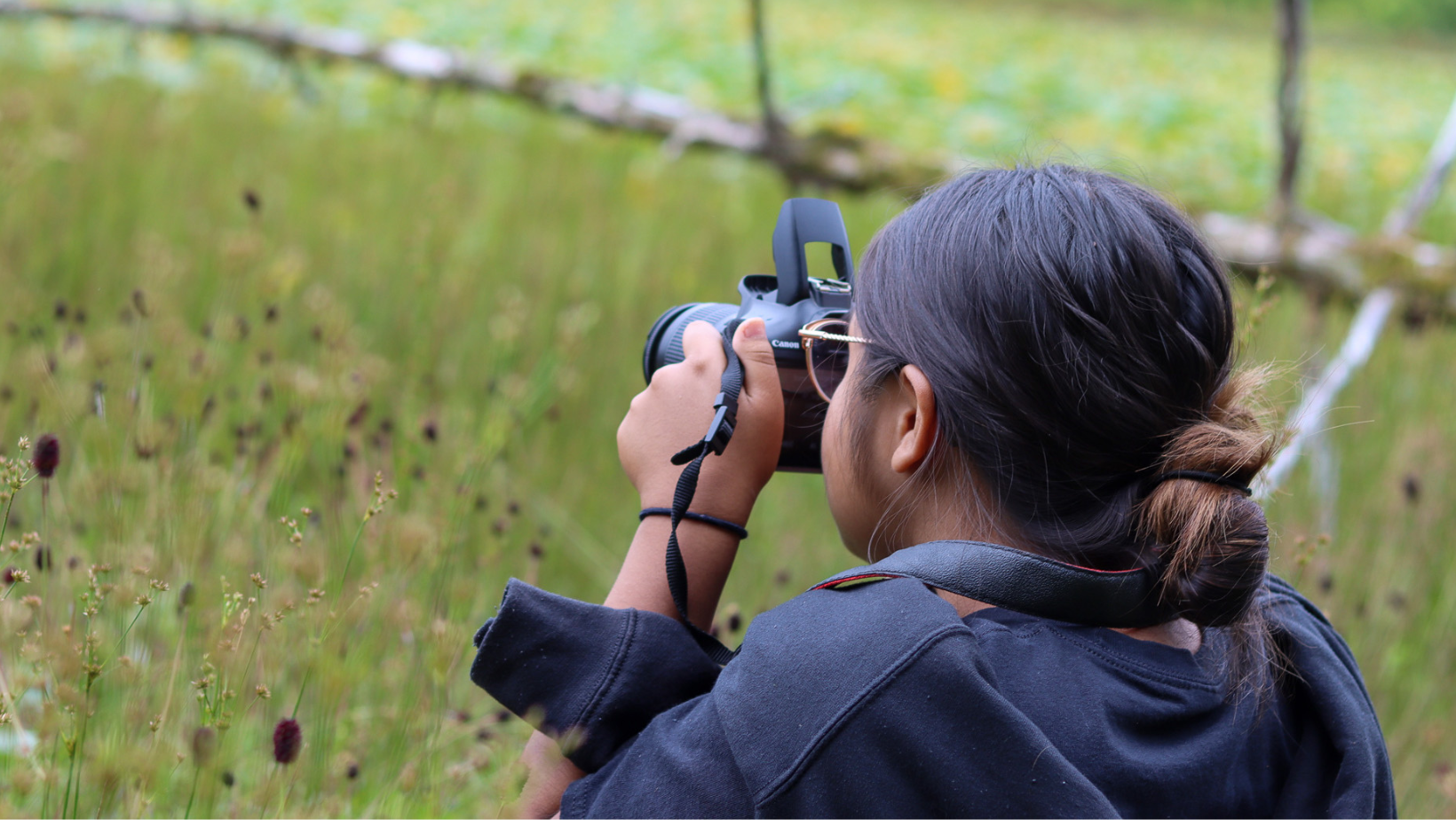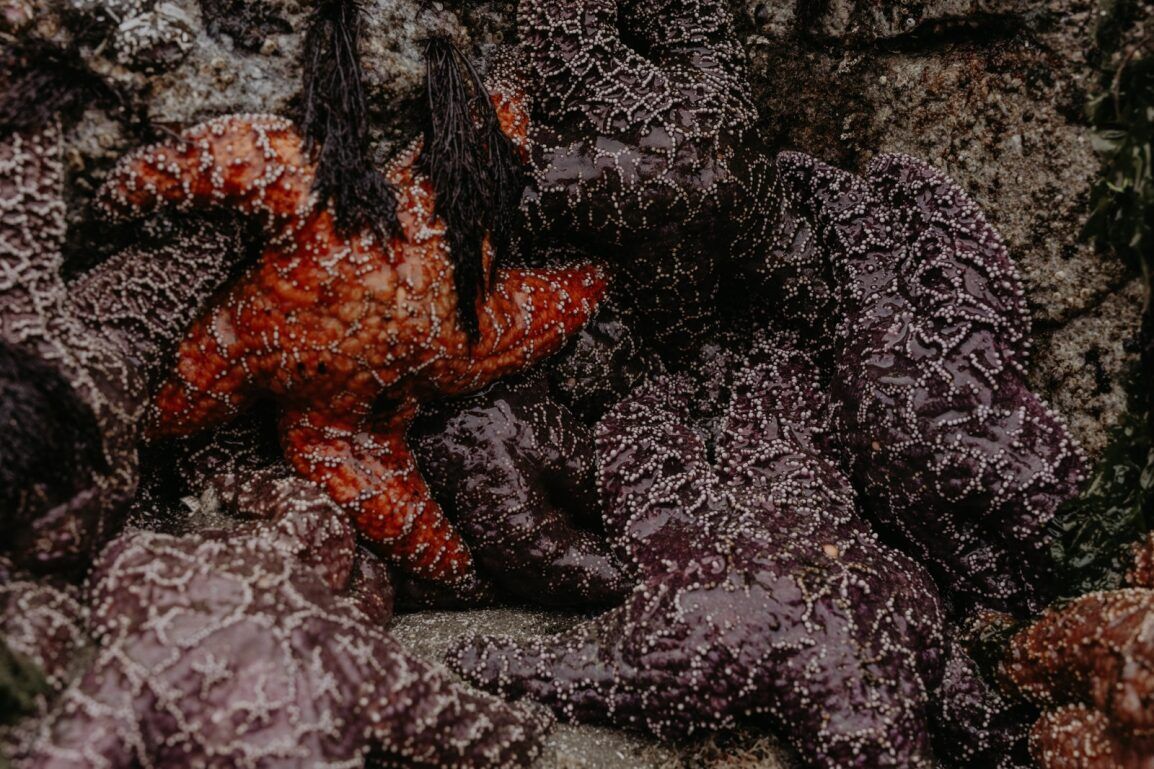Discover Raincoast Education Society’s West Coast Ambassador Program
The West Coast Ambassador Program, a free educational initiative of the Raincoast Education Society, in partnership with the Tofino-Long Beach Chamber of Commerce, Ucluelet Chamber of Commerce, Tourism Ucluelet and Tourism Tofino, offers locals and newcomers a chance to dive deep into the natural and cultural history of their surroundings. They offer three courses: Small Town Big Picture (offered with a focus on either Tofino or Ucluelet), Marine Ecology, and Coastal Rainforest Ecology. You can learn more about this program on their website. Last month, NEST Communications Assistant, Emily, had the opportunity to join the Coastal Rainforest Ecology walk on the Ancient Cedars Loop of the Wild Pacific Trail. She wrote the following story about her experience!
Coastal Rainforest Ecology: Trees of the West Coast
Have you ever walked through a forest and wondered about the stories each tree could tell? I recently attended the Coastal Rainforest Ecology Walk in Ucluelet and was captivated by the wealth of knowledge shared. Here's a glimpse of what I learned!
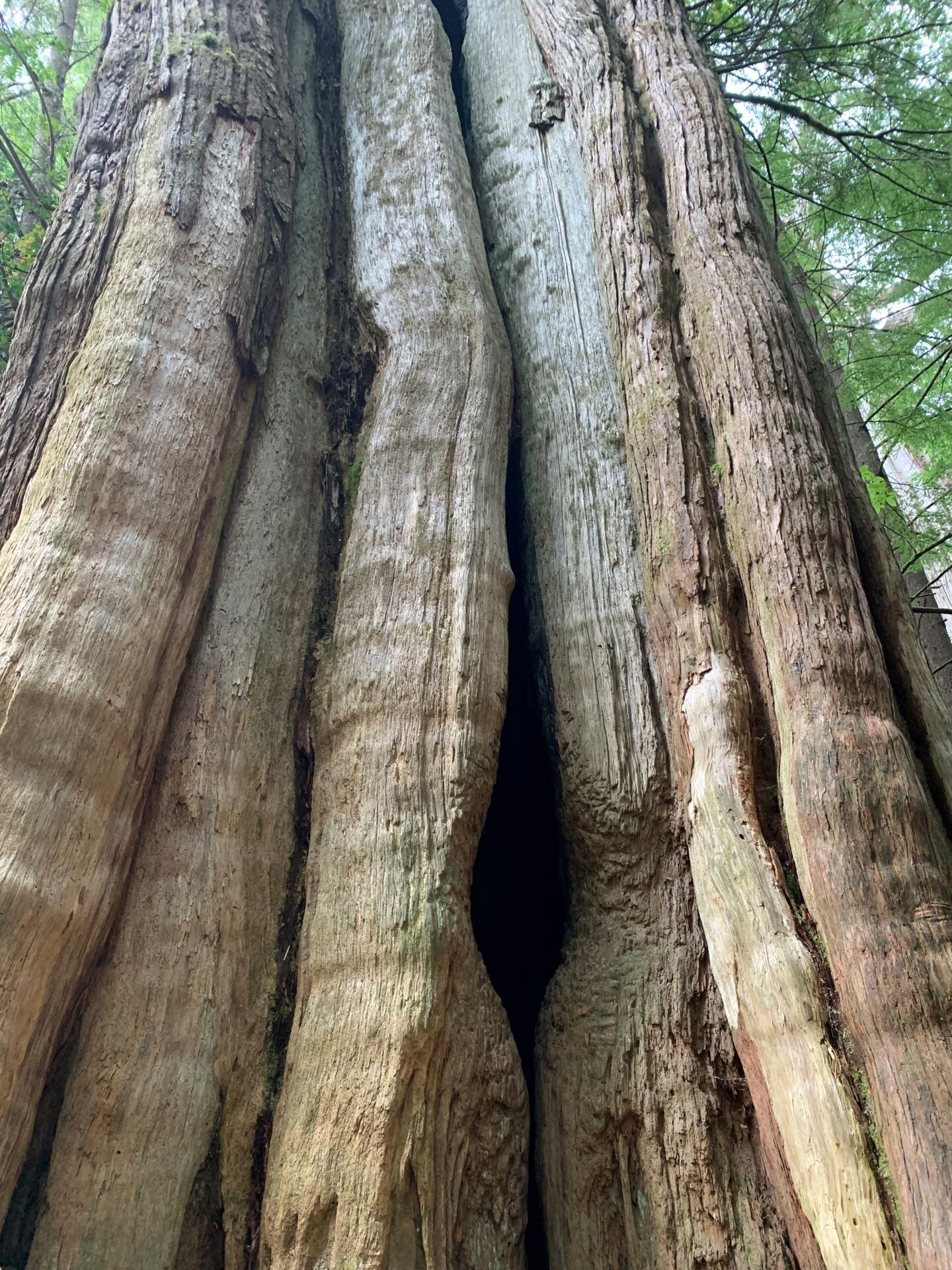
Western Red Cedar: Known as the "Tree of Life," this ancient giant can live for over a thousand years. It has reddish-brown, stringy bark and rot-resistant wood, thanks to its resilience against fungi. Even if its main trunk is damaged, the tree adapts by allowing larger limbs to take over, often resulting in a distinctive candelabra shape.
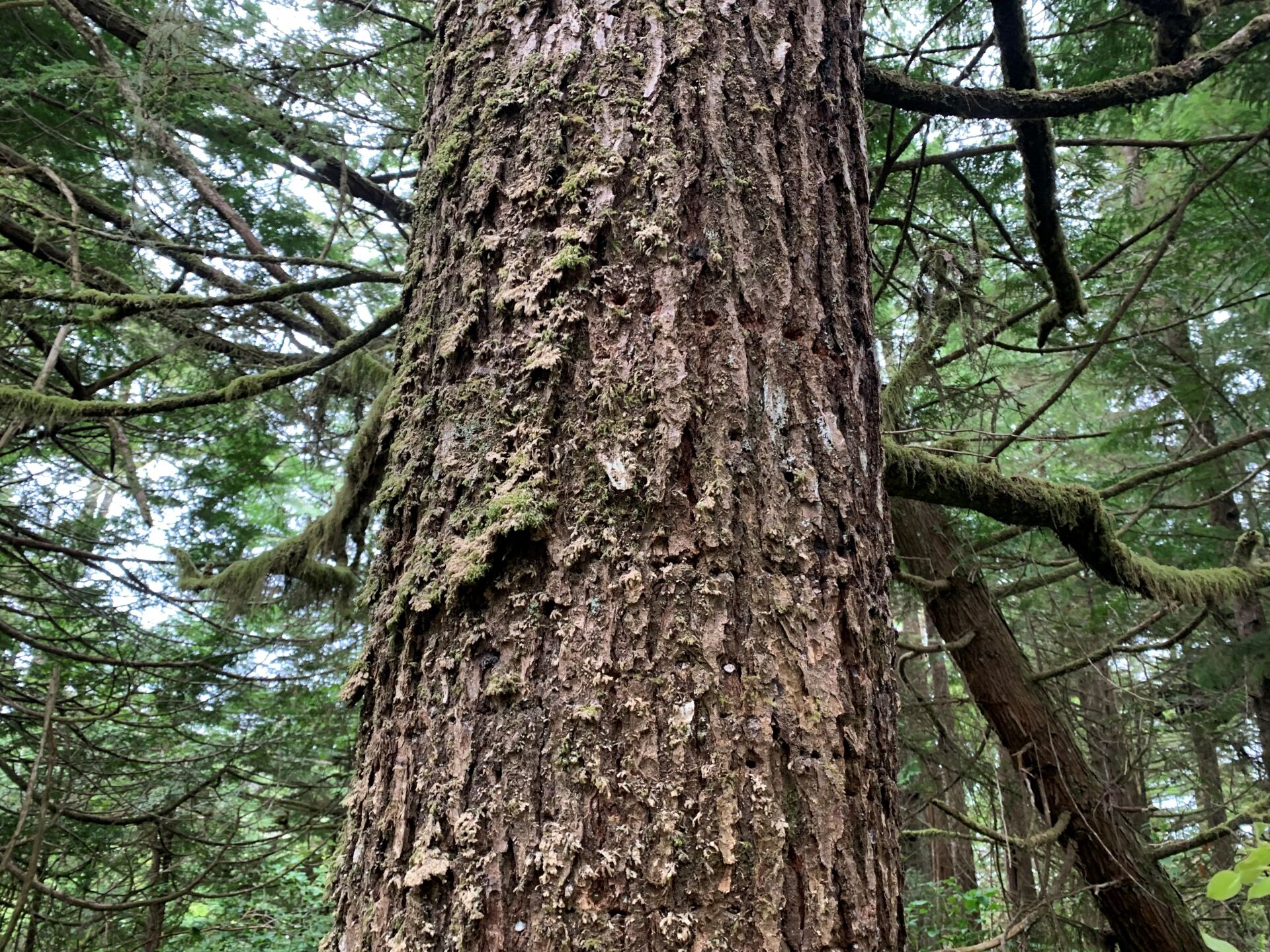
Western Hemlock: This tree, characterized by its rough, furrowed bark and moss-covered branches, is the most abundant in the region due to its prolific seed production. Although less resilient than the cedar and with a shorter lifespan of around 400 years, the hemlock plays a crucial role in the forest ecosystem.
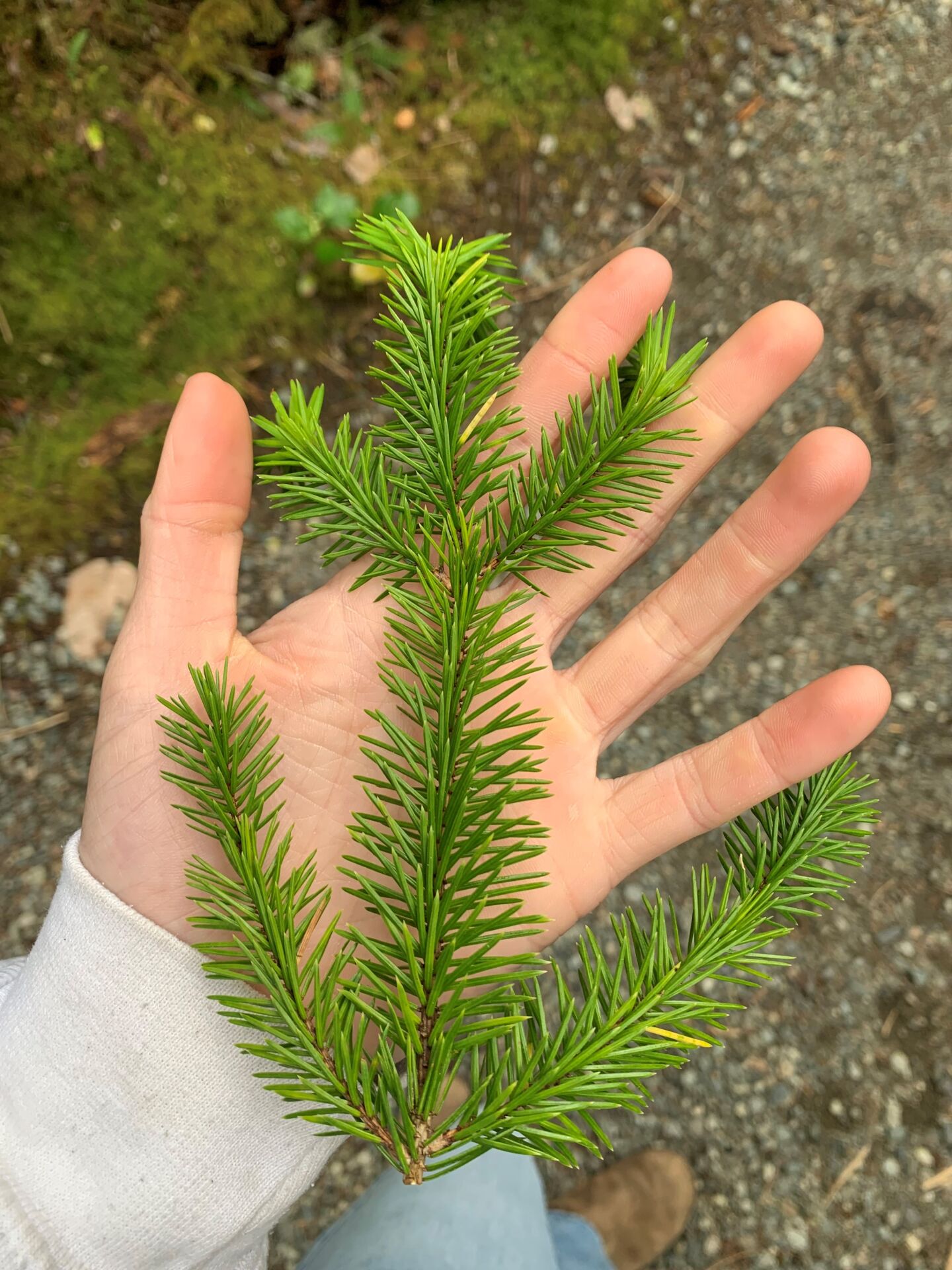
Sitka Spruce: Towering along the coast, the Sitka spruce is the tallest tree in the region, reaching heights of up to 300 feet (90 meters), compared to the cedar’s 200 feet (60 meters). Adapted to the harsh, salty, and windy coastal conditions, the Sitka spruce's sharp needles and scaly bark provide robust protection against the elements. The genetic adaptations of the Sitka spruce make it an impressive and resilient part of the ecosystem.
The Science of Tree Rings
Trees create a ring once a year, a fascinating process driven by hormonal changes that wake up the cambium layer when the weather warms. These rings tell the tree's age and history, with growth patterns reflecting the tree's seasonal rhythms of growth and dormancy. Damage to the cambium—whether from falling trees or animal activity—leaves permanent marks, but the trees demonstrate incredible healing capabilities, gradually sealing their wounds.
The Intricacies of the Forest Floor
Walking through the forest, you’ll notice an abundance of plants like salal, red huckleberries, and salmonberries.
Salal, having adapted to the low light conditions under the thick canopy, thrives with its large, dark green leaves that allow it to photosynthesize. Clusters of white flowers turn into purple berries later in the summer.
Red Huckleberries are set apart from salal by a square stem with no teeth on the leaves. While salal are evergreen, red huckleberries lose their leaves seasonally. The berries are red and come about later in the summer.
Salmonberries, with their pinkish flowers and berries ranging in color from apricot to ruby red, are thought to be named after salmon roe (eggs). Pink flowers turn into various colours of berries early in the summer, which can all be distinguished by the composite (raspberry-like) structure.
The Dance of Life and Decay
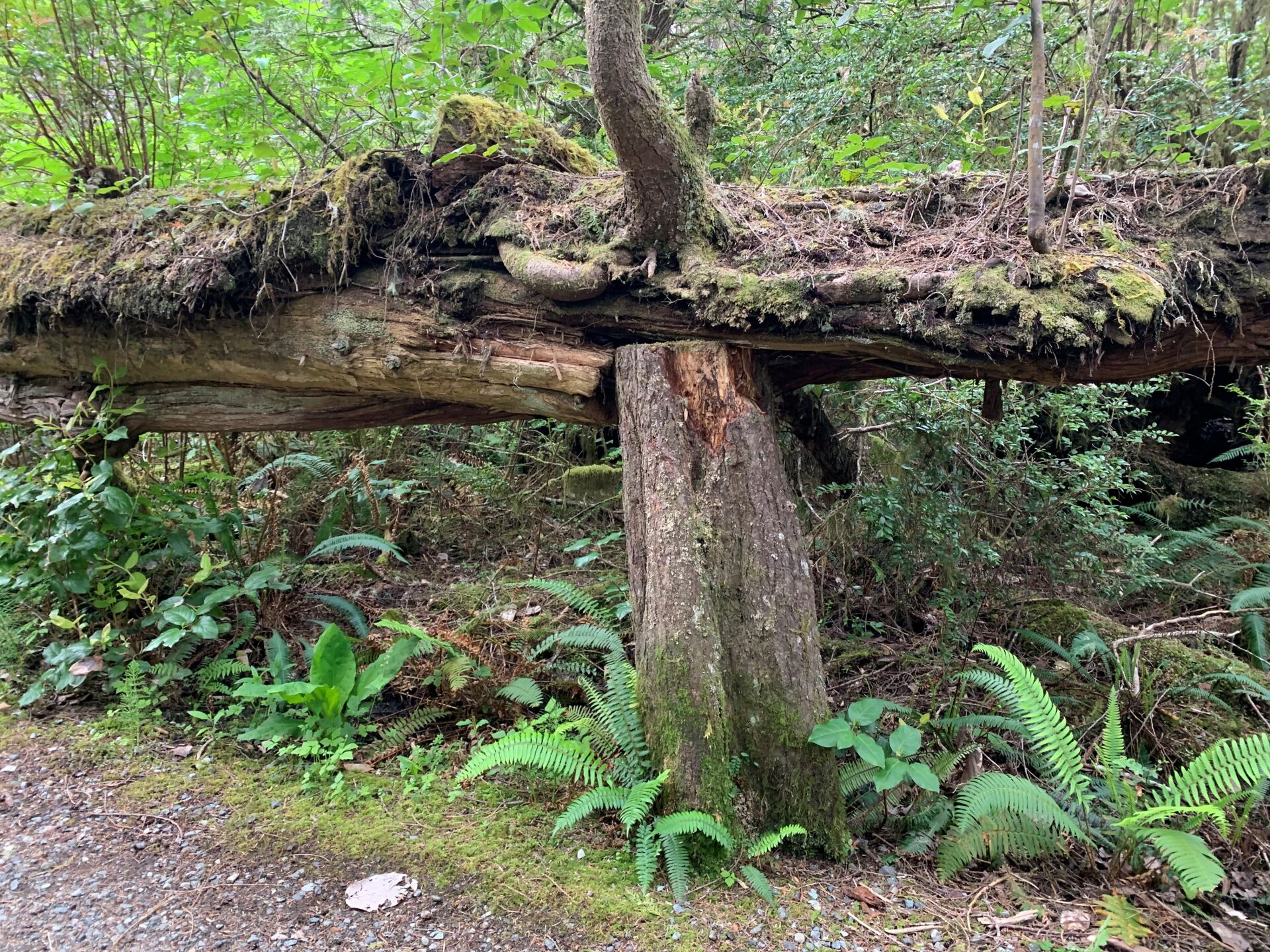
The forest is in a constant state of renewal, driven by wind, fungi, and shallow roots in the young, sandy soil. Nurse logs, fallen trees that support new growth, are critical in this cycle. Elevated and exposed to more light and warmth, these logs become mini ecosystems, teeming with insects, bacteria, and fungi, providing habitat for creatures like salamanders.
Symbiotic Relationships
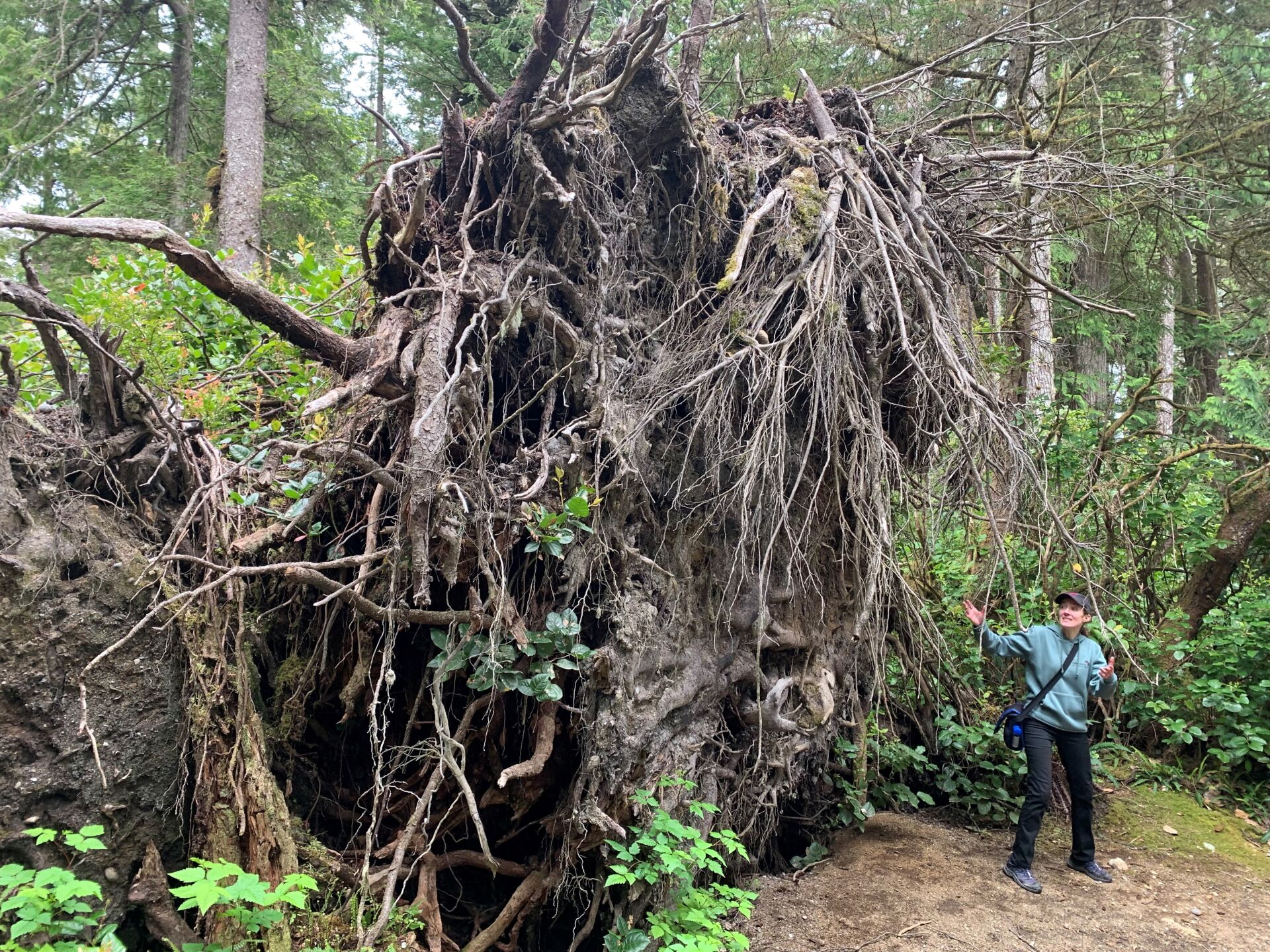
One of the most fascinating aspects of the forest is the underground network of mycelium. The root-like structure of a fungal network connects trees, enabling them to share resources like water and nutrients and even communicate defense signals against threats like insect attacks. This mutualistic relationship benefits trees and fungi.
The Role of Salmon in Forest Health
The forest and its waterways are intimately connected, especially through the lifecycle of salmon. These fish are born in freshwater streams, spend years in the ocean, and return to their birth streams to spawn and die. Their bodies enrich the forest soil with marine nitrogen, fostering tree growth and contributing to the forest's health.
History and Conservation Efforts
Logging
Logging has significantly shaped the landscape since the late 1800s. Initially small-scale, it grew industrially by the 1950s, often leading to clearcuts. Today, there's a push for more sustainable practices like selective logging to mimic natural old-growth forests. Historical protests like the Meares Island blockade and the "War in the Woods," have been pivotal in advocating for conservation.
Wildlife and Responsible Viewing
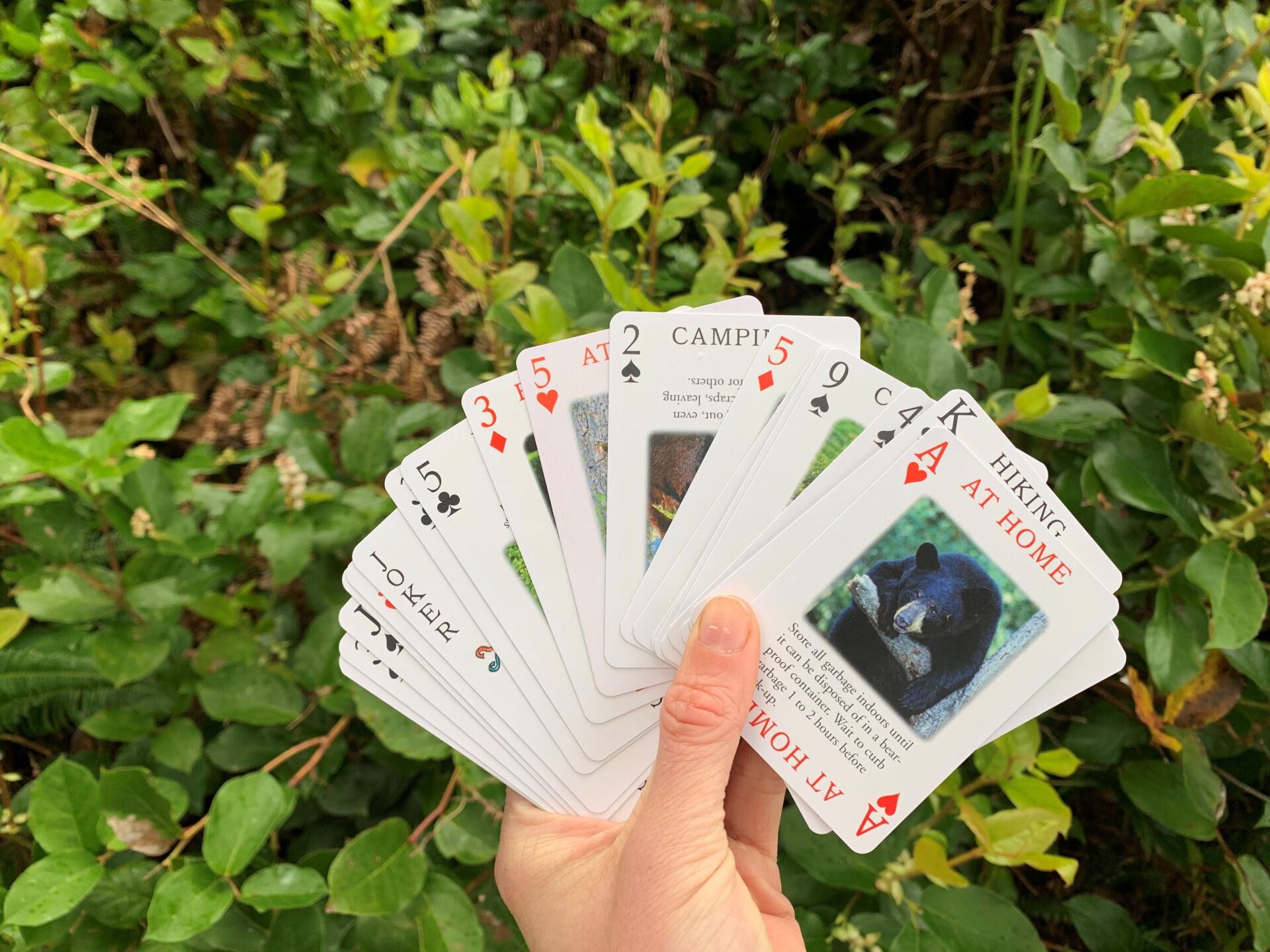
Encountering wildlife is a special part of any forest visit. However, it's crucial to maintain a respectful distance—about 100 meters (the length of eight school buses)—to ensure safety for both humans and animals. At the end of the walk, we talked about our own experiences with wildlife, and played a game with these human-wildlife interaction cards to learn more about keeping ourselves and wildlife safe. If you’re interested in learning more, check out WildSafeBC or read our story on human-wildlife interactions.
Join the Journey
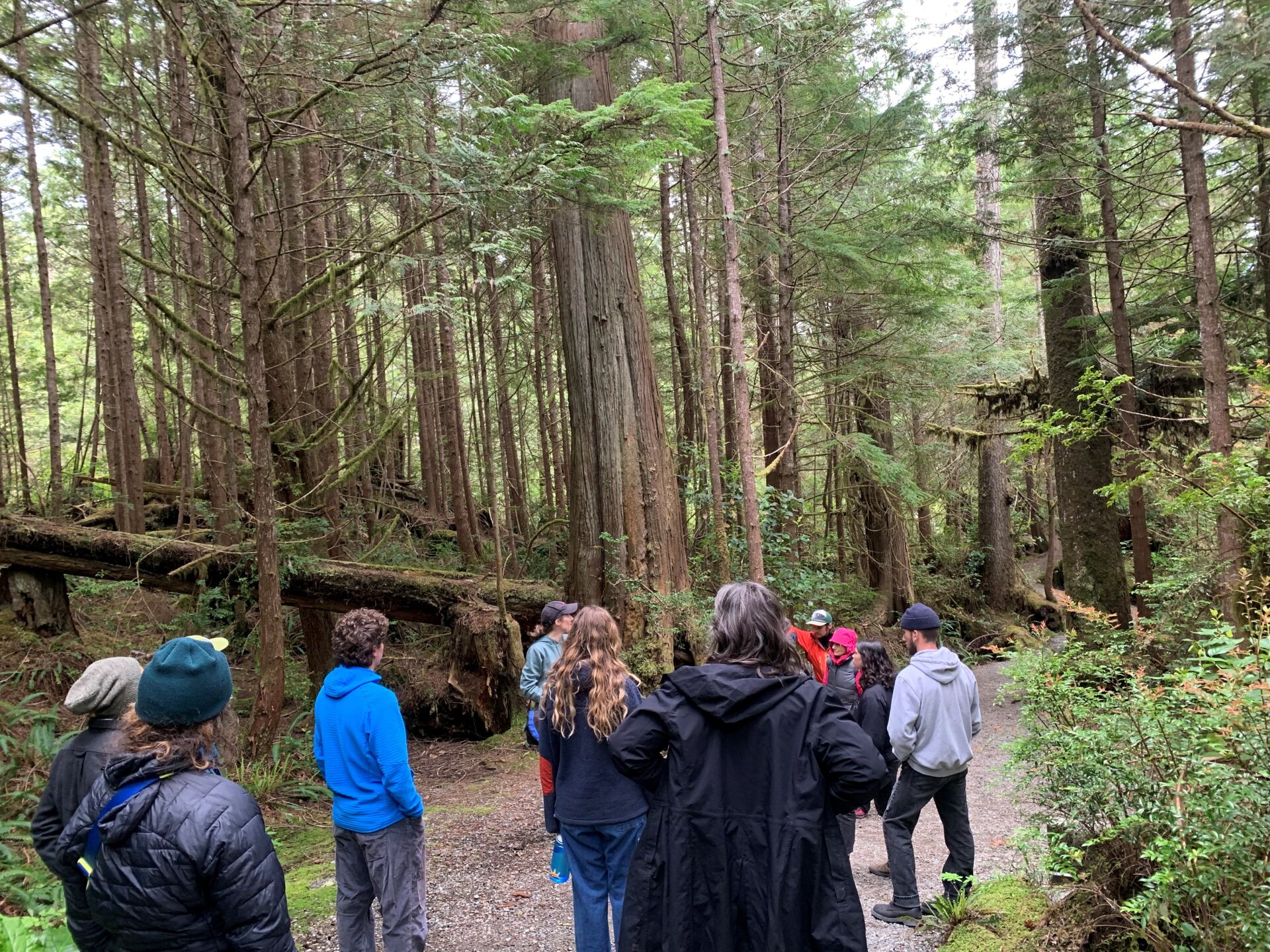
The West Coast Ambassador Program is more than just a walk in the woods; it's an immersive educational experience that deepens your connection to the natural world. Whether you're passionate about conservation, new to the area or simply love the outdoors, this program offers something for everyone. Learn, explore, and become an ambassador for our beautiful West Coast environment! The course is now complete for 2024, but you can check out Raincoast's website and stay tuned for next year's program!



